Field Dressing Steps for Big Game (Deer, Moose, Caribou)
Always refer to local game regulations for current tagging regulations.
The basic guidelines for field dressing are very simple. Once the animal is dead, it should be gutted and cooled immediately, then kept cool.
Field Dressing
Equipment for Big Game

- Sharp Knife
- Sharpener
- Bone Saw
- Hand Axe
- Game Bag
- Game Tag
- Paracord (Minimum 25ft)
- Rubber Gloves
A sharp hunting knife is the most important piece of equipment for field dressing a big game animal. This knife, which ideally has a 4-6-inch blade, should be carried by the hunter whenever he leaves camp. Short lengths of rope and string are also valuable. Other equipment for field dressing, skinning, and quartering include:
-
A whetstone or sharpening steel
-
A small saw or hatchet for splitting the bones of larger animals
-
Clean cloth or paper towel for wiping blood and "zip lock" bags for the heart and liver
-
Cheese cloth bags to protect the meat
-
Latex gloves can protect hunters from wildlife diseases
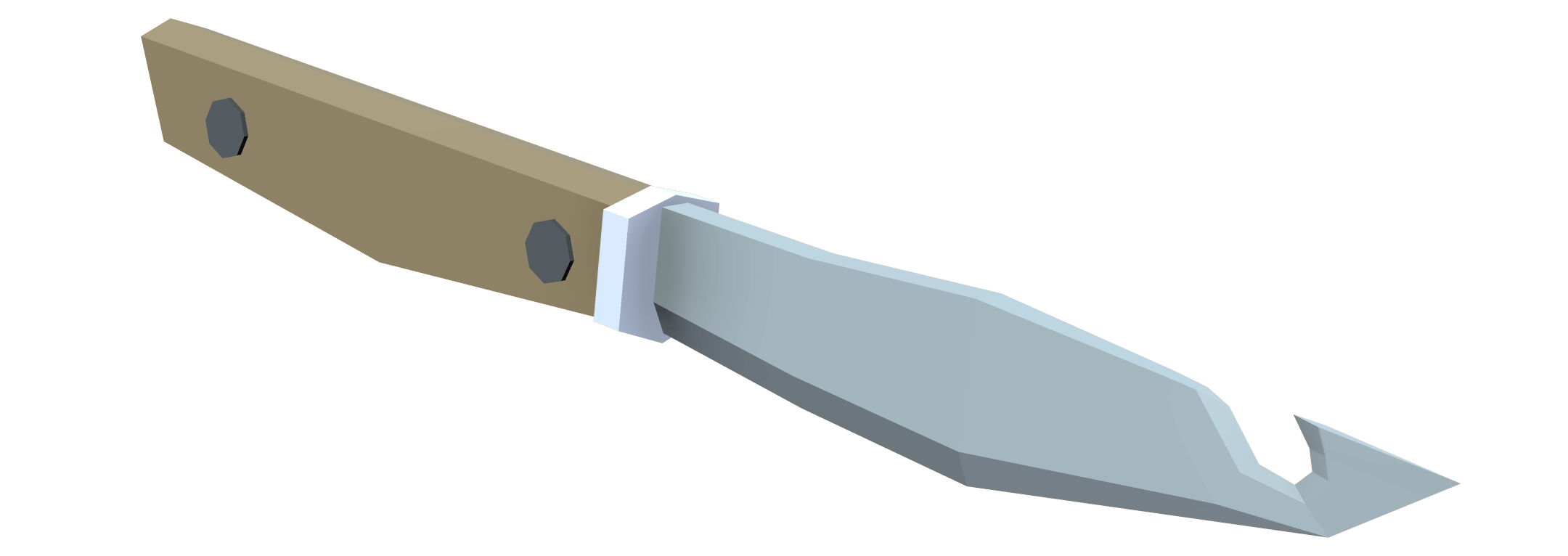
Field Dressing
Steps
Once the animal is deceased, and any tagging requirements are met, the field dressing can begin. Field dressing is the process of removing the internal organs from the animal.
It is imperative that the field dressing be done on location. Bacteria from the digestive system begin to migrate into the body after death. Deterioration of big game occurs one hour after the animal is deceased.
One of the first causes of meat overheating is a delay in the field dressing process. Therefore, it is important to perform the field dressing on site as soon as possible to ensure the meat does not spoil.
With all the steps to follow, dressing an animal can seem complicated the first few times. However, it helps to remember that the most important part of this process is to remove the internal organs. Therefore, if you have to improvise for any reason remember: the goal is to empty the animal.
Step 1:
The first step is to turn the animal onto its back. If you have a tarp, you can use it to prevent dirt from getting on the meat.
Step 2:
Cut through the hide to the breastbone or brisket. Insert your knife under the skin and carefully cut along the center line back to the pelvic (hip) area between the hind legs. Most people prefer to slit the skin and peel it back before cutting through the muscle layer. This keeps hair away from the meat and makes it easier to see what you are doing. When cutting through the muscle layer, use your fingers to guide the blade so the stomach and intestines are not punctured.
With a female animal, cut to one side of the udder. With a male, skin the genital organs away from the carcass and place them out of the way between the hind legs. This will prevent contamination of the meat if the bladder is squeezed during gutting. Continue to cut forward from the breast bone to the throat. If the cape is to be mounted, stop the forward cut between the front legs.
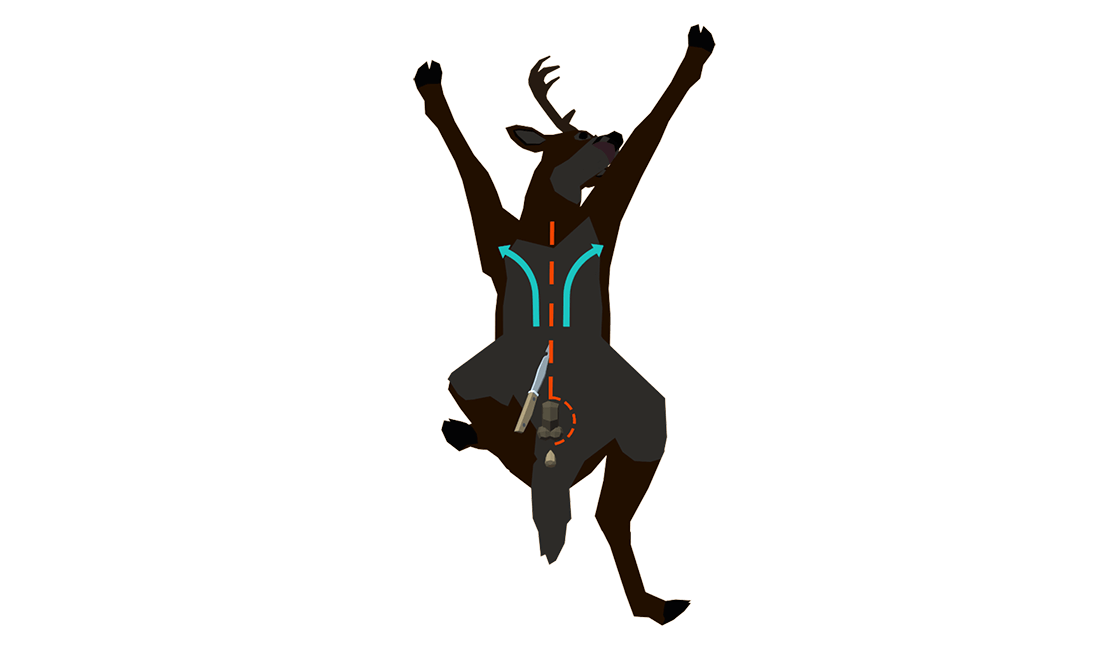
Step 3:
Carefully cut around the rectum (and, if the animal is female, the vulva) being sure not to puncture the intestine. To aid in their removal, the pelvic bone can be split, but you must be careful not to puncture the intestine.
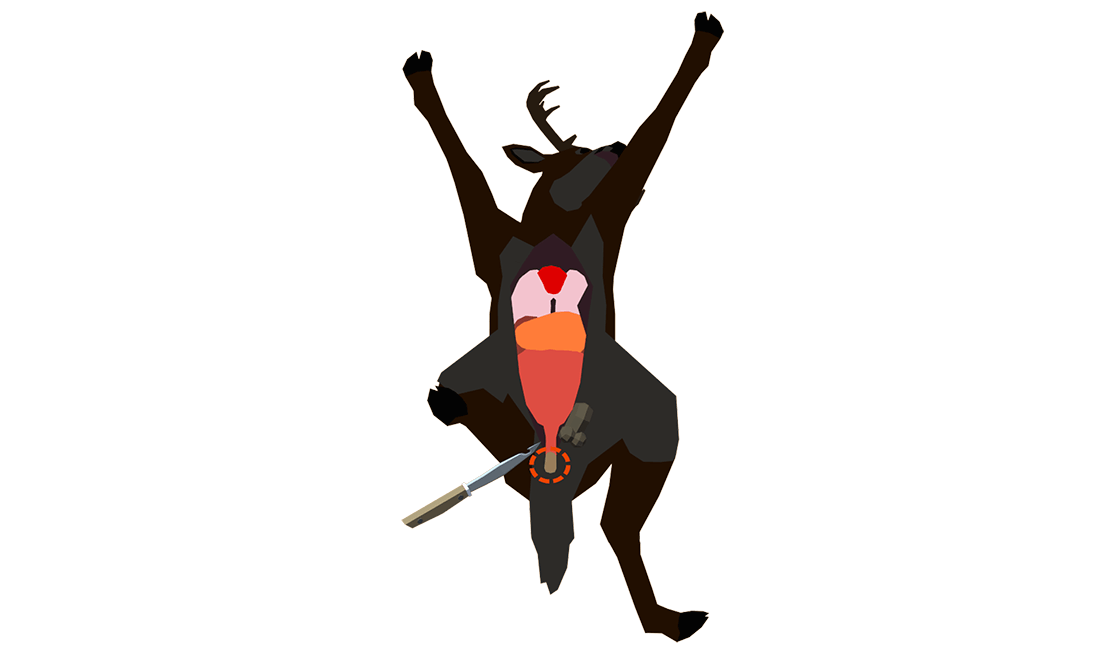
Step 4:
Split the sternum just to one side of the center.
.
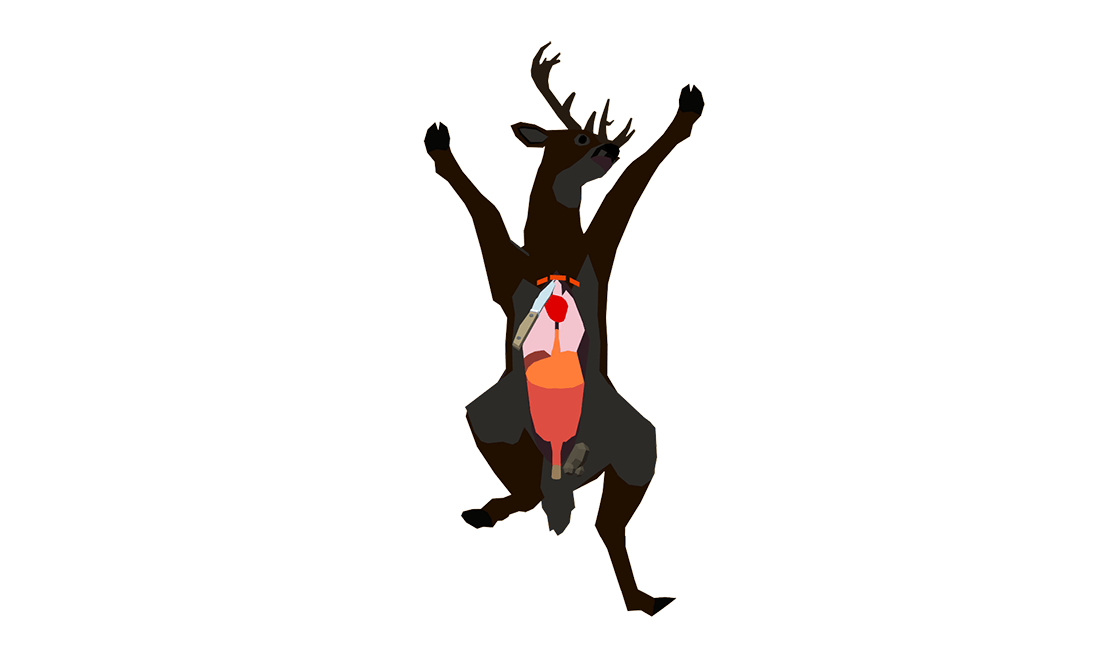
Step 5:
Loosen the organs in the body cavity by cutting the tissues connecting them to the body wall. Be sure to cut both sides of the diaphragm.
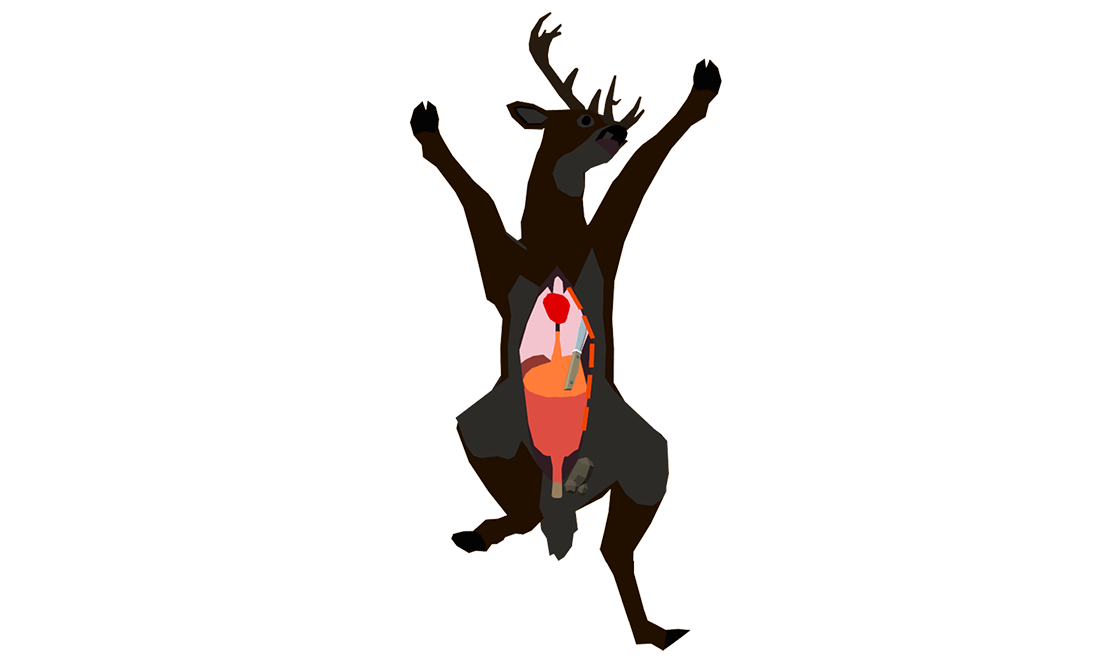
Step 6:
Cut the trachea (windpipe) and esophagus free at the throat. With animals you intend to have mounted, reach forward inside the chest cavity and cut the trachea and esophagus.
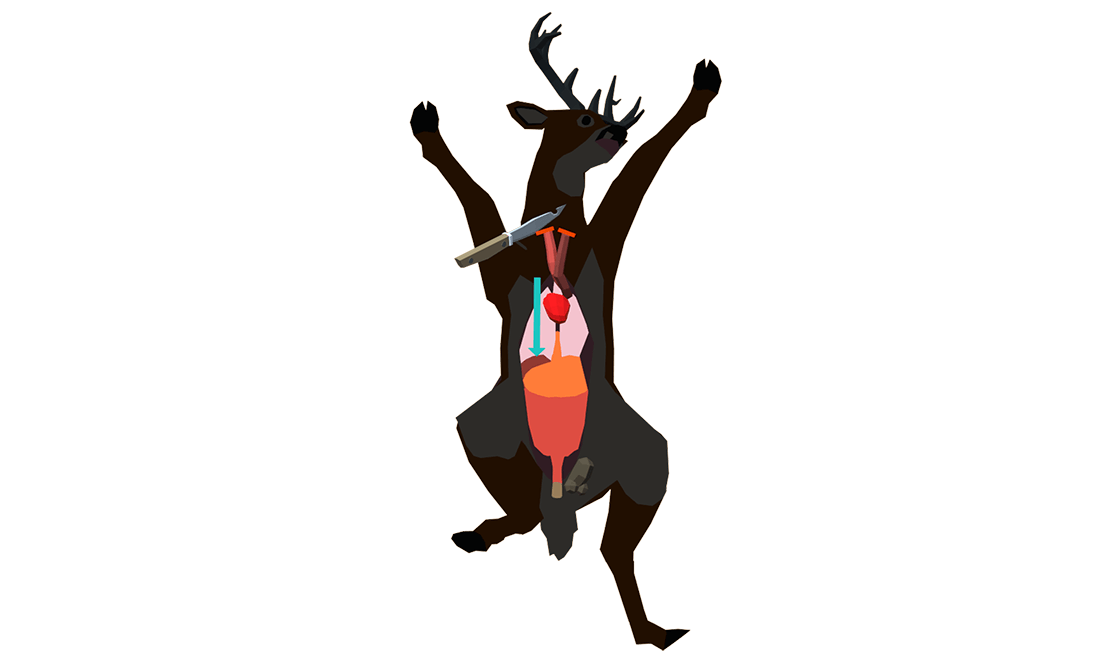
Step 7:
Grasp the esophagus and trachea in one hand and pull backward. With the other hand, free any internal organs with your knife. Pull all the entrails out of the body cavity. The liver, heart and kidneys can now be recovered. Set them aside to cool. When you are finished dressing the animal, wipe these organs clean and place them in a bag for transport. Any additional organs should be properly disposed.
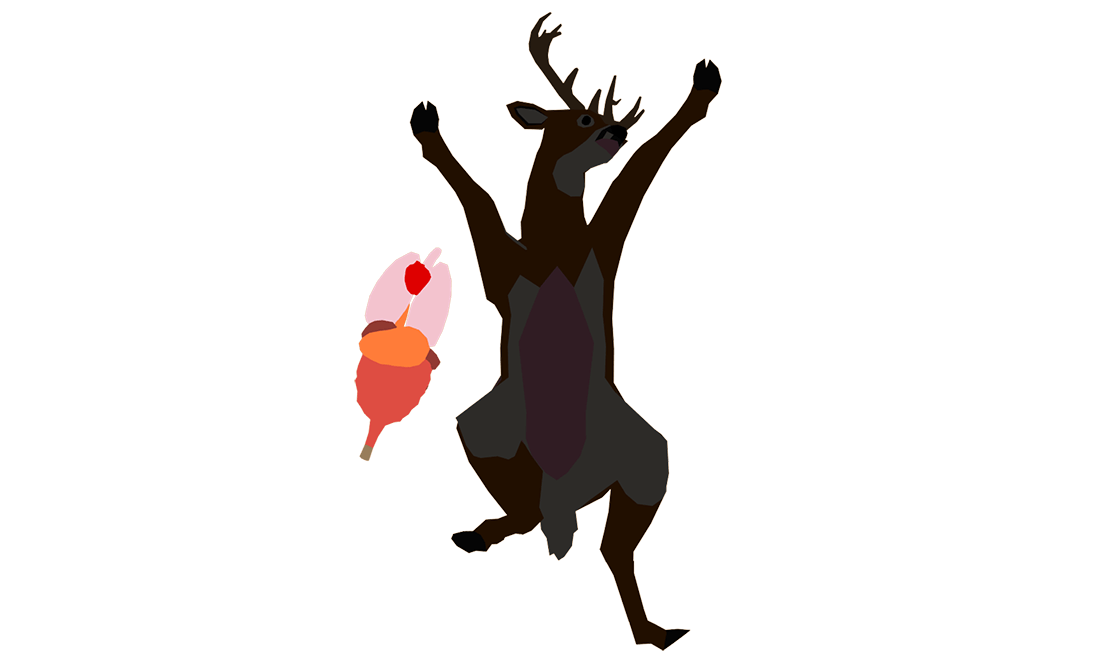
Step 8:
Drain the blood from the carcass by simply turning the animal over, taking care to keep grass and dirt out of the body cavity.
Step 9:
Clean the inside of the carcass.